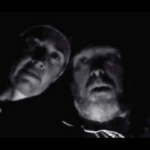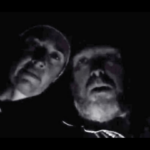The Criminal Offence of Threatening Serious Harm Over the Internet

A United Staes man has been arrested in conjunction with the Wieambilla shootings last year, during which two police officers and four Queenslanders died.
Donald Day Jr was arrested by the Federal Bureau of Intelligence in Arizona on 1 December 2023.
Law enforcement authorities are alleging that 58-year old Mr Day, who has for years propagated extremist Christian ideologies, “repeatedly sent messages… to Gareth, and then later to Stacey [two of the people believed to be responsible for the shootings] inciting them to commit crimes.
It is further alleged Mr Day published posts on 16 December 2022, four days after the shooting, which amount to the offence of making a serious threat over the internet.
He has been charged with two offences, the first of which relates to the said threats and is similar to the Australian federal offence of using a carriage service to threaten serious harm under section 474.15(2) of the Criminal Code Act 1995 (Cth).
The second charge relates to unrelated alleged threats against the head of the World Health Organisation.
Targeting ‘divergent thinking’
Police have long held the view that the shooting was motivated by extremist Christian ideology.
It led to the Queensland Police being issued a controversial directive to report matters of ‘divergent thinking’ that may be considered dangerous.
Under this directive, police officers are required to report members of the community who allegedly hold “a range of ideological beliefs”, including conspiracy theorists and religious-related ideology so that if need be, if activity escalates, they can be “flagged” in the database.
International investigation
The QPS has been conducting a lengthy investigation into the deaths of Constables Matthew Arnold and Rachel McCrow, and Alan Dare – a neighbour to Stacey, Gareth and Nathaniel Train over the past 12 months.
And although they did say that a considerable focus would be online, they have only now revealed that their investigations had ventured overseas to investigate people with whom the Train family had been in contact.
According to Queensland Police, Donald Day Jr was in contact with the Trains for two years prior to the shooting, repeatedly sending what police have described as “Christian, end-of-days ideological messages” between May 2021, and the shooting in December last year.
Police claim the Trains subscribed to a broad Christian fundamentalist belief system known as premillennialism, which has the fundamental belief that after a turbulent period on Earth, Jesus Christ will return.
Documents released by the US District Court in Arizona outline two charges against Mr Day.
Threats of violence
The first charge, which is the one that is said to be connected with the shooting, is that of making a threat of violence.
It relates to a YouTube video that Mr Day allegedly posted on December 16 – four days after the shooting at Wieambilla.
In a video titled ‘Daniel and Jane’, pseudonyms used by Gareth and Stacey Train on the platform, Mr Day allegedly says:
“It breaks my fucking heart that there’s nothing that I can do to help them. These are a people that are not armed, as we are in America, that at least have that one resort to fight against fucking tyrants in this country. And here, my brave brother and sister, a son and a daughter of the Most High have done exactly what they were supposed to do, and that is to kill these fucking devils.”
And…
“Like my brother Daniel, like my sister Jane, it is no different for us. The devils come for us, they fucking die. It’s just that simple. We are free people, we are owned by no-one.”
Prosecutors allege that last comment was a threat of violence towards any law enforcement officials who could come to Mr Day’s home.
The US charge of ‘making an interstate threat’
Mr Day has been charged with “making an interstate threat”.
This offence is detailed in section 875 of the U.S. Code 18, which says: “Whoever transmits in interstate or foreign commerce any communication containing any threat to kidnap any person or any threat to injure the person of another, shall be fined under this title or imprisoned not more than five years, or both.” The fine is up to $US250,000 ($382,000).
Legal experts say that it is a charge becoming more commonly used by law enforcement officers investigating the ever-increasing proliferation of online hate.
Previously tried cases in the US show it is possible for anyone charged with this offence to cite the First Amendment as a defence.
The First Amendment protects freedom of speech, freedom of religion, freedom of the press, assembly, and the right to petition the Government for a redress of grievances.
However, in one case, Anthony Elonis v. United States, who was charged after he posted violent “rap style” lyrics to social media in the weeks after his wife decided to leave him, the defendant argued that his posts were “fictitious,” and not intended to depict real people.
He also argued that they were an exercise of his First Amendment rights, and/or “therapeutic.”
Anthony Elonis was ultimately found guilty of four of the five counts he was charged with. He appealed the decision all the way to the United States Supreme Court, which is the highest court in the land, but his efforts were unsuccessful.
The appeal courts consistently made clear the First Amendment protection is not absolute, and the charges against Mr Elonis are both valid in law and substantiated by the evidence against him, as there was clear evidence of threats and a reasonable person would see them as such.
In one judgement, the court determined that “crucial element separating legal innocence from wrongful conduct” is the threatening nature of the communication; therefore, the mental state requirement must apply to the fact that the communication contains a threat – how the posts would be understood by a reasonable person.
Using a carriage service to threaten serious harm
In Australia, a charge which is similar to the United States offence of making a serious threat is using a carriage service to threaten serious harm, which is contained in section 474.15(2) of the Criminal Code Act 1995 and carries a maximum penalty of 7 years in prison.
To establish the offence, the prosecution must prove beyond reasonable doubt that:
- The defendant used a carriage service,
- This use included a threat to cause serious harm to another person, and
- The person intended for another person to fear that the threat would be carried out against them or another person.
The use of a carriage service includes making telephone calls, sending text messages and internet transmissions, such as emails, and publishing to social media sites and channels.
It is not necessary for the prosecution to prove the other person actually feared the threat would be carried out.
Legal defences to the charge include duress, necessity, and self-defence, and it is important to be aware that where there is evidence of a legal defence, the prosecution is then required to disprove beyond reasonable doubt that the defence applies in the circumstances.
The defendant is entitled to a verdict of not guilty if the prosecution is unable to do this.







